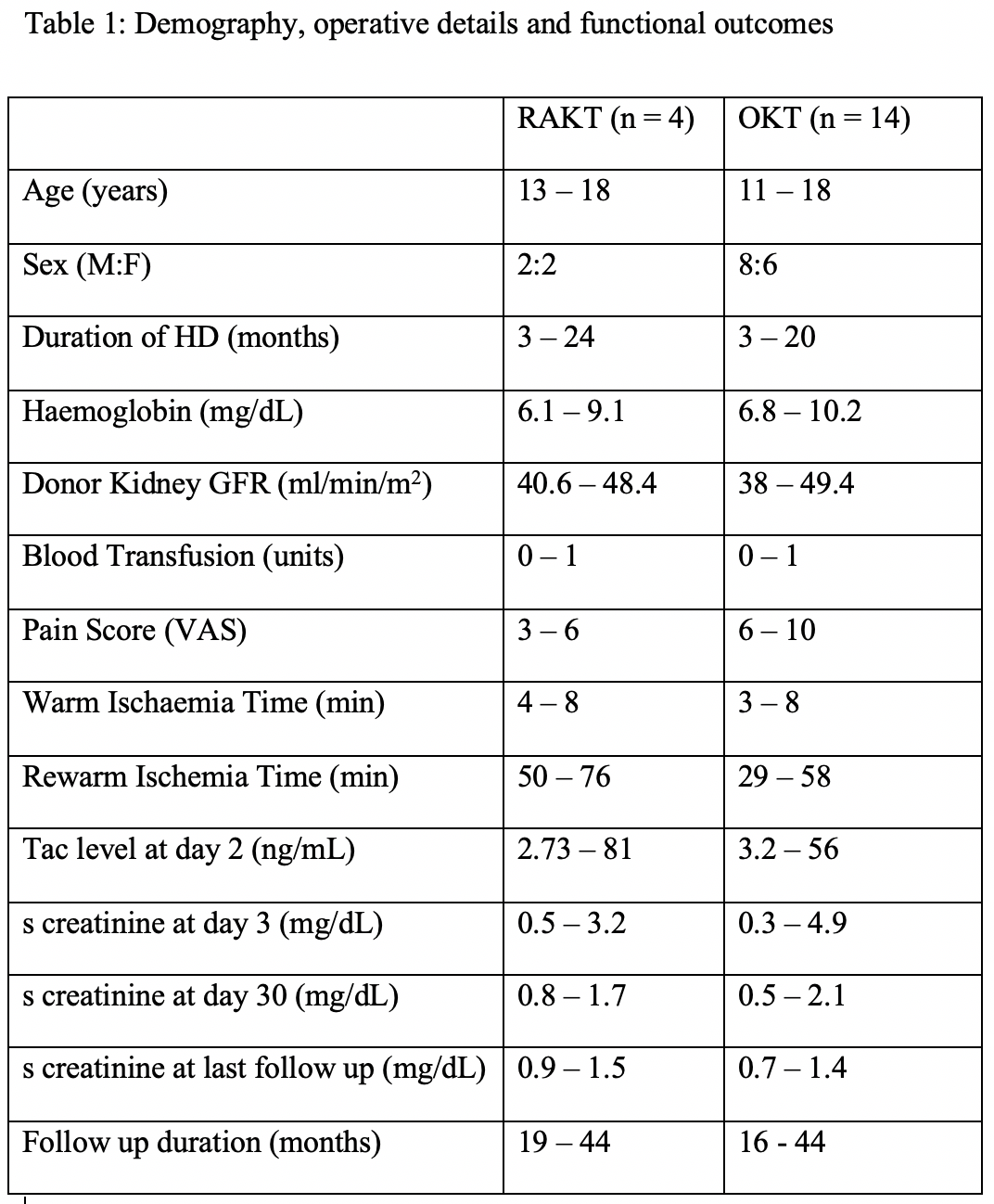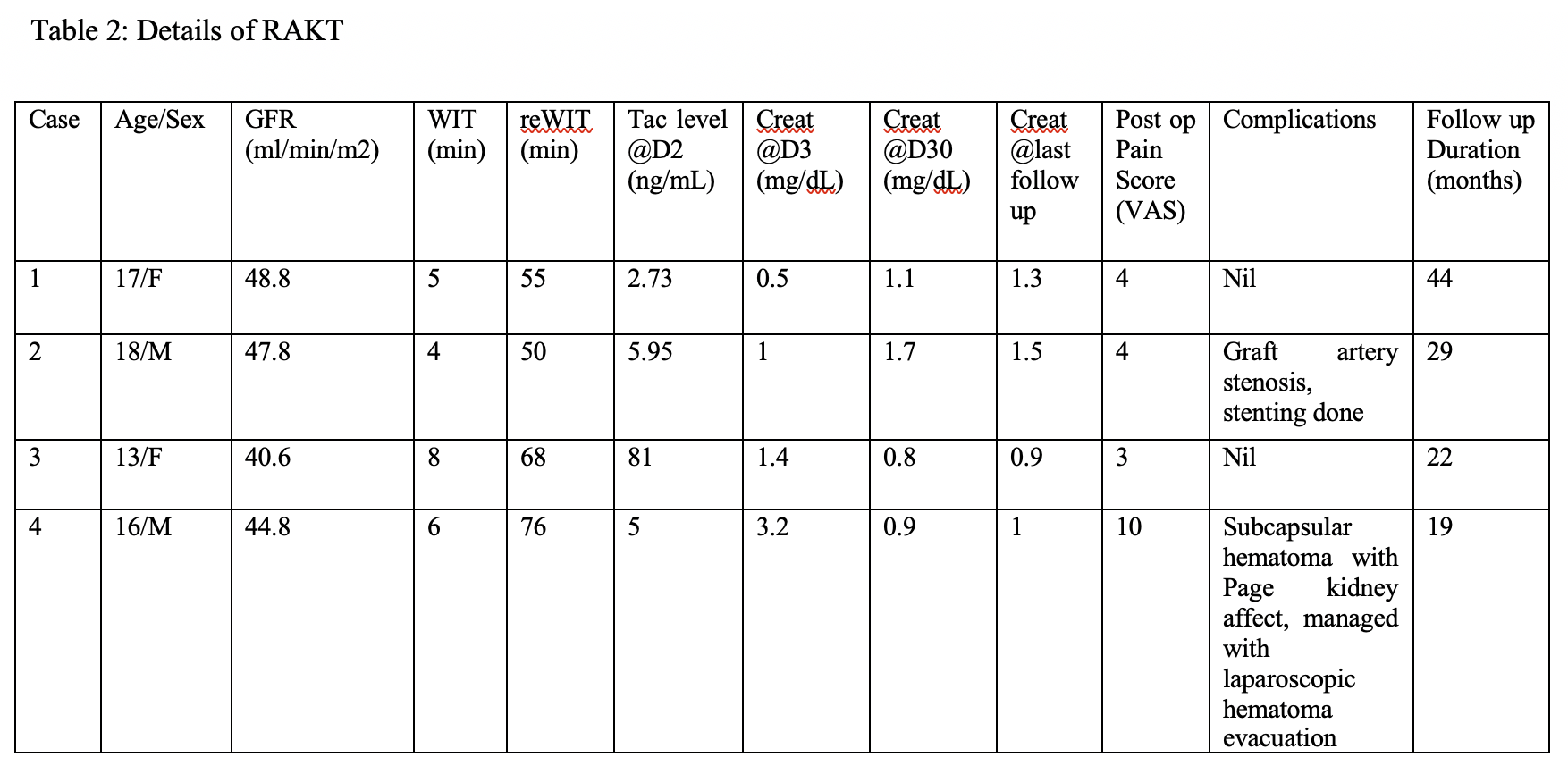Comparison of outcomes between open and robot assisted kidney transplant in paediatric population-initial results
Anant Kumar1, Ruchir Maheshwari1, Samit Chaturvedi1, Pragnesh Desai1, Syed Y. Qadri1.
1Urology, Uro-oncology, Robotics and Renal Transplantation, Max Healthcare, New Delhi, India
Introduction: Robotic Assisted Kidney Transplant (RAKT)is being increasingly utilized in adult patients. Its application in paediatric population is still evolving. Equipment size, learning curve and small working space are major issues. Herein, we compared outcomes of children who underwent RAKT with open kidney transplant (OKT) at our centre.
Materials and Methods: Between April 2016 and August 2018, 4 children underwent RAKT and 14 children underwent OKT. All had live related donors. Grafts were laparoscopically harvested from adult donors. Kidney was introduced inside the peritoneal cavity through Pfannenstiel incision in two children and Gelpoint® in two. Anastomosis was performed with common iliac vessels (end to side) in all the three cases of RAKT while in open cases depending upon the size of children, anastomosis was done with common,internal or external iliac vessels. Modified Lich-Gregoir ureteroneocystotomy was performed in all cases over DJ stent.
Results: Patient demography, operative characteristics, mean operative time, warm ischaemia time, duration of hospital stay and Serum creatinine at one week, one month and three months were comparable between the two groups. Mean operative time was longer in RAKT, but was not statistically significant. Diuresis was immediate in all patients. Mean estimated blood loss (EBL), need for analgesia, length of scar and incidence of wound infection significantly favoured RAKT.



Conclusion: Well performed RAKT is technically feasible and safe in children with similar functional outcomes. RAKT is cosmetically superior than open procedure especially in girls. More cases of RAKT are required to established better comparative results.
There are no comments yet...